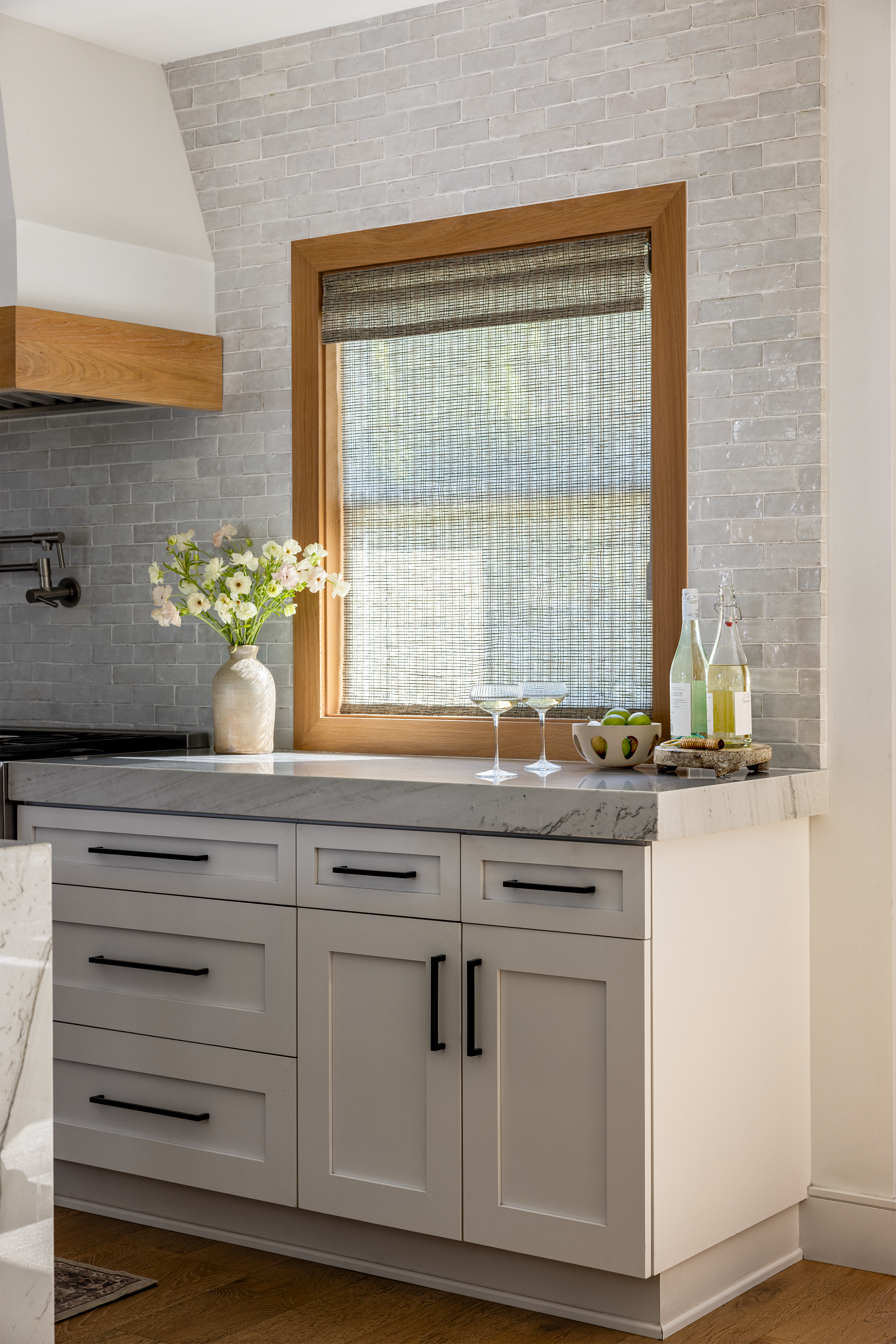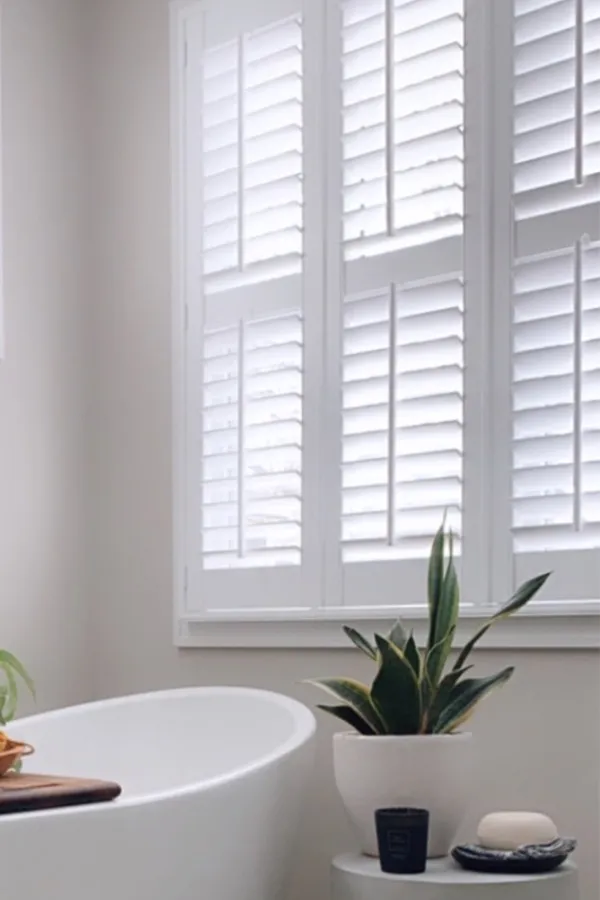
Window Treatment & Fabric Glossary
Choosing the right window treatments is easier when you understand the terms designers and manufacturers use. This glossary explains common fabric types, weave patterns, and industry phrases you may see when shopping with 3 Day Blinds. Each entry includes plain-language definitions, practical tips, and notes on where you might encounter these fabrics in blinds, shades, drapery, or shutters.
Not sure which fabric fits your space? Book a Free In-Home Consultation.
A–Z Glossary of Terms
- Acrylic
A synthetic fiber known for its softness, lightweight feel, and resistance to fading.
- Window Treatment Use: Often blended into fabrics for drapery or shades to improve durability and colorfastness.
- Care Tip: Easy-care; resists wrinkling and shrinkage.
- Basket Weave
A variation of the plain weave where groups of warp and filling threads are interlaced to resemble a woven basket.
- Window Treatment Use: Adds texture and depth to Roller shades and drapery.
- Care Tip: Spot clean gently to avoid distorting the weave.
- Batiste
A fine, lightweight, transparent fabric usually made of cotton or cotton blends.
- Window Treatment Use: Often chosen for Sheer curtains and layered drapery because it filters light beautifully.
- Care Tip: Best cared for by delicate washing or dry cleaning.
- Blend
Fabrics made from two or more fibers combined in the same yarn, such as polyester/cotton.
- Window Treatment Use: Blends are common in drapery for added wrinkle resistance and durability.
- Care Tip: Generally low-maintenance and easy to clean.
- Brocade
A heavy fabric woven with raised floral or geometric patterns, often metallic.
- Window Treatment Use: Adds drama and luxury to drapery panels.
- Design Note: Best suited for formal living or dining rooms.
- Canvas
A strong, durable, plain-woven fabric made from cotton, linen, or synthetics.
- Window Treatment Use: Popular for casual Roman shades or outdoor curtains.
- Care Tip: Spot clean; heavier weights may require professional cleaning.
- Cellulose
The main structural component of plant fibers such as cotton, linen, or rayon.
- Window Treatment Use: Found in natural fiber fabrics and regenerated fibers like viscose/rayon.
- Design Note: Adds breathable qualities to fabrics.
- Chenille
Fabric with a velvety pile created by fuzzy yarns.
- Window Treatment Use: Adds texture and depth to drapery or Roman shades.
- Care Tip: Spot clean or dry clean to preserve softness.
- Cotton
A natural fiber known for softness, breathability, and versatility.
- Window Treatment Use: Common in drapery, Roman shades, and blended fabrics.
- Care Tip: May shrink if not pre-treated; machine washable in many blends.
- Damask
A reversible fabric with woven patterns, typically floral or geometric.
- Window Treatment Use: Perfect for elegant drapery or Roman shades that make a statement.
- Design Note: Adds a touch of sophistication to formal rooms.
- Dupioni Silk
Silk fabric woven from uneven threads that create a crisp texture with subtle sheen.
- Window Treatment Use: A luxury fabric often selected for custom drapery or Roman shades.
- Care Tip: Protect from direct sunlight to prevent fading.
- Embroidery
Decorative stitching used to create patterns or embellishments on fabric.
- Window Treatment Use: Adds detail and luxury to custom drapery panels or valances.
- Design Note: Works beautifully in traditional or transitional interiors.
- Face
The front or “right side” of a fabric, meant to be displayed.
- Window Treatment Use: Designers typically choose the face for visible surfaces on drapery and shades.
- Fiber
The basic unit of textiles, either natural (cotton, silk, flax) or synthetic (polyester, nylon).
- Window Treatment Use: Fiber composition determines texture, durability, and care.
- Flame Resistant
Fabric treated or manufactured to resist ignition and reduce flame spread.
- Window Treatment Use: Popular in children’s rooms, nurseries, or commercial spaces.
- Safety Note: Look for flame-resistant labels if safety is a concern.
- Flame Retardant
Fabric treated to resist ignition and slow flame spread.
- Window Treatment Use: Required in many commercial spaces and popular for nurseries or playrooms.
- Safety Note: Distinct from “flame resistant,” which is inherent in the fiber itself.
- Flax
The plant from which linen fiber is made.
- Window Treatment Use: Provides natural, breathable qualities in linen drapery and often Woven wood shades.
- Design Note: Offers a casual, textured appearance.
- French Toile
A printed fabric with scenic or pastoral motifs, often in a single contrasting color.
- Window Treatment Use: Classic choice for traditional drapery or Roman shades.
- Design Note: Adds French country charm to interiors.
- Herringbone
A distinctive V-shaped weaving pattern resembling fish bones.
- Window Treatment Use: Adds subtle texture and visual interest to fabric shades or drapery.
- Design Note: Works well in tailored, modern spaces.
- Jacobean
A decorative embroidery style featuring ornate floral designs, originating in 17th-century England.
- Window Treatment Use: Adds richness and heritage to drapery fabrics.
- Design Note: Complements traditional or classic home décor.
- Jacquard
Fabric with intricate woven designs created on a Jacquard loom.
- Window Treatment Use: Adds dimension and style to shades and drapery.
- Design Note: Often used in premium decorative treatments.
- Linen
A natural fiber made from flax, known for strength and cool texture.
- Window Treatment Use: A timeless choice for Roman shades and drapery.
- Care Tip: Prone to wrinkling; best professionally cleaned or blended with synthetics.
- Matelassé
A fabric woven to create a quilted, padded effect without actual padding.
- Window Treatment Use: Adds texture and dimension to drapery or valances.
- Design Note: Creates a subtle, sophisticated surface pattern.
- Nylon
A synthetic fiber noted for strength, elasticity, and resistance to abrasion.
- Window Treatment Use: Commonly blended into fabrics for durability.
- Care Tip: Easy to wash and resistant to wrinkles.
- Olefin (Polyolefin / Polypropylene)
A synthetic fiber known for stain resistance, moisture resistance, and colorfastness.
- Window Treatment Use: Popular in roller shades, outdoor curtains, and durable fabrics.
- Care Tip: Simple to clean; resists mildew.
- Paisley
A teardrop-shaped ornamental design of Persian origin.
- Window Treatment Use: Adds a traditional or eclectic touch to patterned drapery and shades.
- Design Note: Works well in bohemian or classic interiors.
- Polyester
A synthetic fiber valued for strength, resistance to stretching, and color retention.
- Window Treatment Use: One of the most common fibers in shades and drapery blends.
- Care Tip: Easy to clean and wrinkle-resistant.
- Sateen
A weave structure with a smooth, lustrous surface, usually made from cotton.
- Window Treatment Use: Used in drapery or lining fabrics for a subtle sheen.
- Design Note: Offers a soft alternative to silk or satin.
- Satin
A weave that produces a smooth, glossy surface.
- Window Treatment Use: Creates a glamorous finish in drapery and decorative Roman shades.
- Design Note: Reflective sheen adds drama, especially in bedrooms or formal dining rooms.
- Shantung
A type of silk fabric with an irregular, slubby (thicker in some parts than in others) texture.
- Window Treatment Use: Elegant choice for formal drapery or Roman shades.
- Care Tip: Sensitive to sun; requires lining to prevent fading.
- Sheer Fabric
Lightweight, translucent fabric that filters light while providing privacy.
- Window Treatment Use: Common in Sheer shades and layered drapery.
- Design Note: Softens natural daylight beautifully.
- Silk
A natural fiber spun from silkworms, prized for luster and strength.
- Window Treatment Use: Premium choice for elegant drapery or Roman shades.
- Care Tip: Sun-sensitive; requires lining and gentle cleaning.
- Synthetic
Man-made fibers such as polyester, nylon, acrylic, or olefin.
- Window Treatment Use: Known for durability, fade resistance, and affordability.
- Design Note: Widely used in blends to improve performance.
- Twill
A weave pattern featuring diagonal ribbing.
- Window Treatment Use: Strong yet flexible, making it versatile for many fabric shades.
- Durability Note: Holds up well in high-traffic households.
- Viscose (Rayon)
A semi-synthetic fiber made from cellulose. Soft, drapable, and silky to the touch.
- Window Treatment Use: Common in drapery and Roman shades where fluid draping is desired.
- Care Tip: Handle gently; may shrink if improperly washed.
- Voile
A sheer, lightweight fabric made from cotton or polyester blends.
- Window Treatment Use: Often used for sheer panels and layered designs to soften light.
- Design Note: Ideal for airy, casual spaces.
- Warp
The lengthwise yarns held in tension on a loom during weaving.
- Window Treatment Use: Contributes to the strength and structure of woven fabrics.
- Weave
The interlacing of warp and weft threads to create fabric.
- Window Treatment Use: Weave type affects texture, weight, and appearance of shades and drapery.
- Weft
The horizontal yarns inserted across the warp during weaving.
- Window Treatment Use: Determines flexibility and surface pattern of fabrics.
- Yarn
Continuous strands of twisted fibers used in weaving or knitting fabric.
- Window Treatment Use: Yarn type influences durability, color, and feel of finished window treatments.


d405ccdc-850f-4df2-8bd4-b690a3d1366e.png?Status=Master&sfvrsn=f8a364b3_1)
